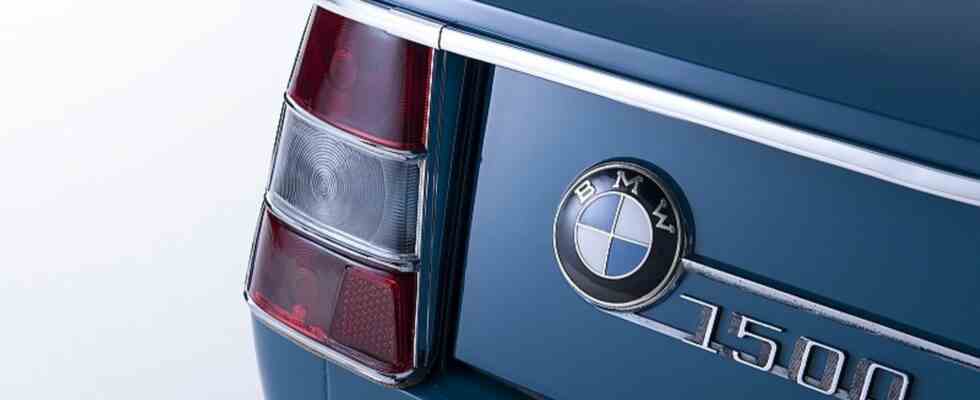Technology: This is behind the new class from BMW
To the heart of the brand
BMW new class 1960s
© press-inform – the press office
The new BMW 7 Series has only just come onto the market and many can hardly wait for the polarizing XM power SUV to finally hit the shops. But inside BMW there is actually only one topic: the new class.
For such an international brand as BMW, one would have wished for a more understandable name as “new class”. Because when BMW CEO Oliver Zipse or Development Director Frank Weber talk about the new class in interviews or on stage, it’s not just foreign speakers who look at them in disbelief. But that’s not all, because even in Europe or Germany only established car experts still know what to do with the term “new class”. In the early / mid-1960s, after turbulent times and almost being taken over by Mercedes, BMW dared to make a fresh start with the new class. As it is today, it was more of a project designation, because at that time the new middle class was all about the BMW 1800, which between 1963 and 1971 offered a power range from 90 to 130 hp – a lot of dynamics for a sporty family sedan of its time.
Nobody really knows why BMW has dug out this new class, which is anything but well-known and then emphasizes the German designation. As in the 1960s, the new class of the future that will be launched on the market from 2025 is about more than a single car, but about a conversion of the entire portfolio. Production, development, added value or platform – all this means the new class. Anyone who thinks that it is a new vehicle is wrong. But of course it starts with a model that introduces this new class and that will be the new BMW three-series. To be more precise, the electric model of the new Dreier, because unlike many other manufacturers, the Munich-based company is not only switching to electric drives for the sake of driving pleasure. “The new class is designed exclusively for electric vehicles,” says BMW Board Member for Development Frank Weber, indirectly making it clear that combustion models will have little to do with the new vehicle approach despite the ongoing strategy of sharing parts.
The new class is preceded by the upcoming three-series BMW, of which there was an abstract design to be admired at the Consumer Electronics Show in Las Vegas with the future version of the BMW i Vision Dee. BMW chief creative head Adrian van Hooydonk describes the design of the Dee as a 2.5-box sedan, which should particularly please with its proportions, which are typical BMW. And if you look at the body surfaces of the future study away from what is happening at the trade fair in the Nevada desert, you will actually recognize the well-known BMW shapes and crisp proportions. A relationship to the style icon of the BMW E46, better known to many as the three-series from 1998 to 2007, can hardly be denied in the i Vision Dee despite the puristic interior capers, but its predecessor E36 or successor E90 can also be found. The name of the upcoming three-seater with an electric motor should officially be called the BMW i3 – but it has nothing to do with the expired carbon i3 or the electric China version of the three-seater. The i3 designation should continue as long as BMW still offers the combustion models on the old platform.
The i Vision Dee, staged with unusual boldness in Las Vegas, is primarily about the interior and operation. What is clear, however, is that the upcoming i3, as the first model in the new class, and the BMW iX3 SUV that will follow shortly thereafter, will still have normal controls and displays, unlike the future study. However, for the first time there will be a head-up display that not only shows the driver, but also the entire width of the windscreen at a height of initially around 15 centimetres. “This is more than a vision. We bring this innovation to the new class. As early as 2025 – i.e. the year after next – our customers will be able to experience this completely new technology in their vehicles,” said Oliver Zipse at CES 2023 in Las Vegas. The individual functions are operated by voice, steering wheel and touch function on displays. It can be assumed that the textile surfaces in the doors will soon play a role in the operation of comfort functions.
The drives in the i3 will be the next generation of the current electric motors. The vehicles are available with rear-wheel and all-wheel drive and have between 200 and 500 hp, which should not detract from the driving pleasure compared to the electric models. On the contrary, because the upcoming three-series BMW will offer driving performance like no other mid-range model from Munich before it. By 2027, a BMW i3M with more than 600 hp should also come onto the market – obligatory with all-wheel drive and a top speed of over 250 km/h – for the first time for an electric BMW.
In terms of efficiency, Frank Weber promises improvements of around 25 percent due to new battery technology and particularly intelligently networked on-board electronics. This means that the current WLTP standard consumption of the upcoming three-generation in relation to the current BMW i4 (16 – 19 kWh / 100 km) should be reduced to 12 to 15 kWh per 100 kilometers. In addition, an 800-volt electrical system is likely to be used in the next generation of the BMW i3 and thus in all models in the new class, which should increase the current charging speeds from a maximum of 200 kW to 250 and later to 300 kW.

